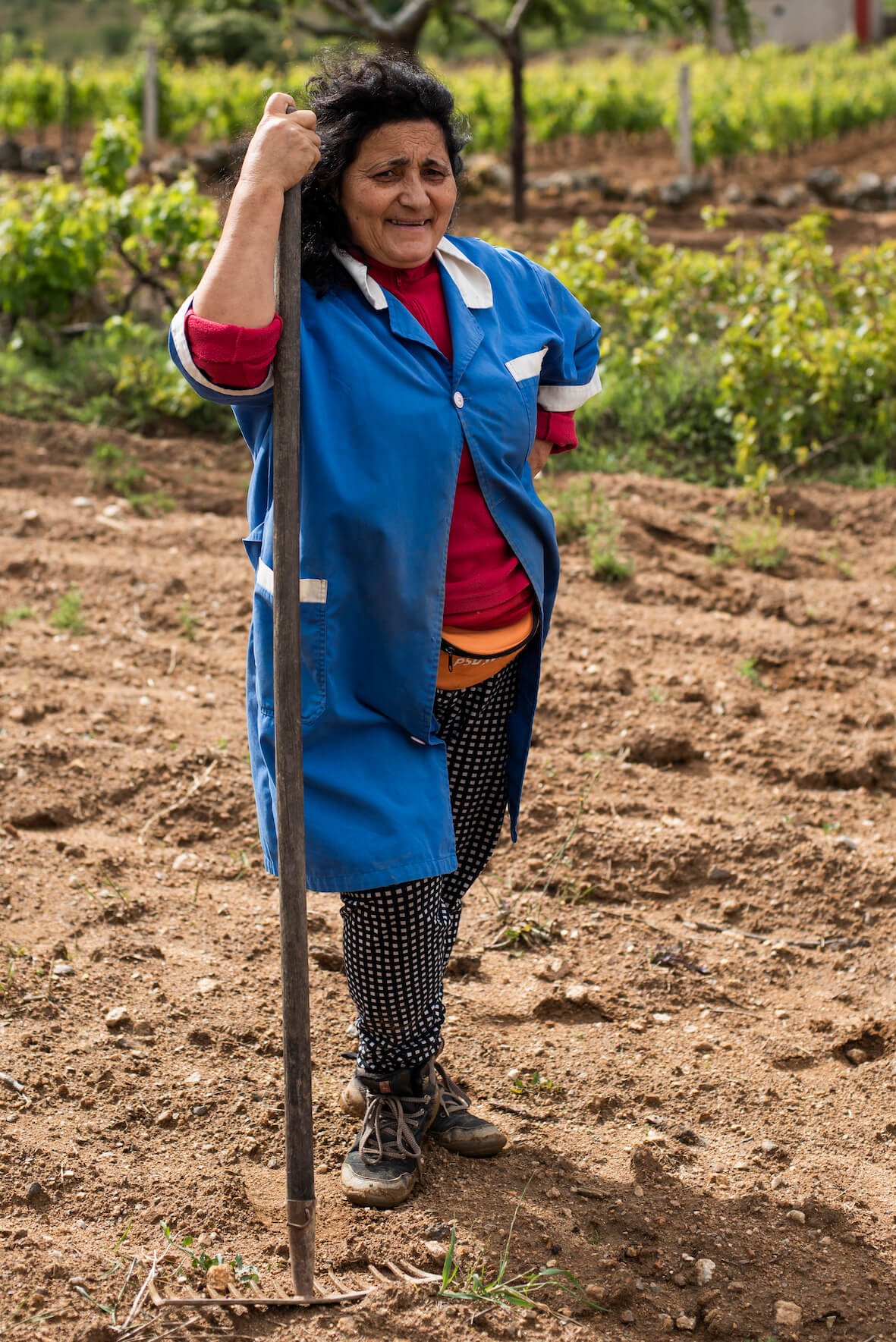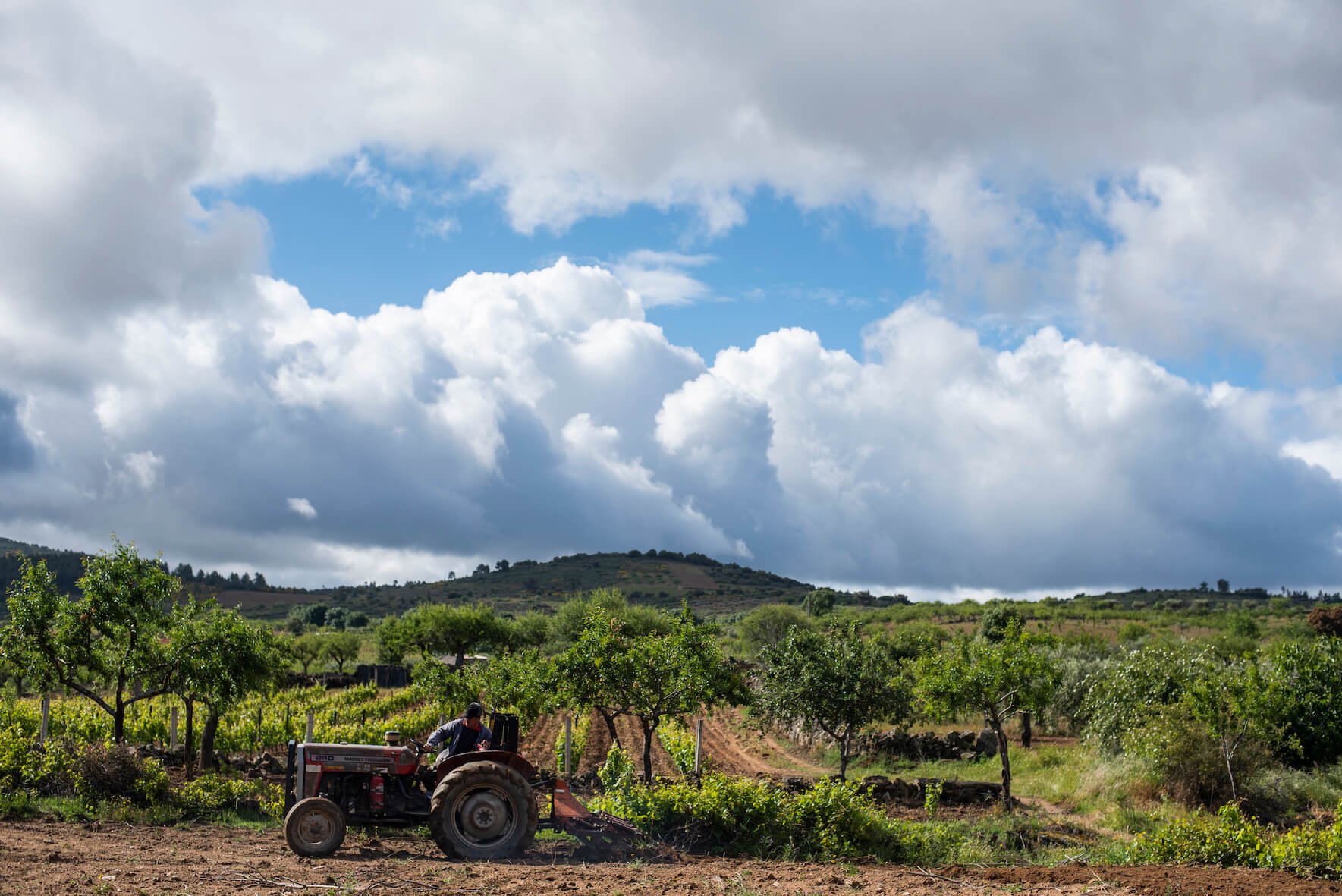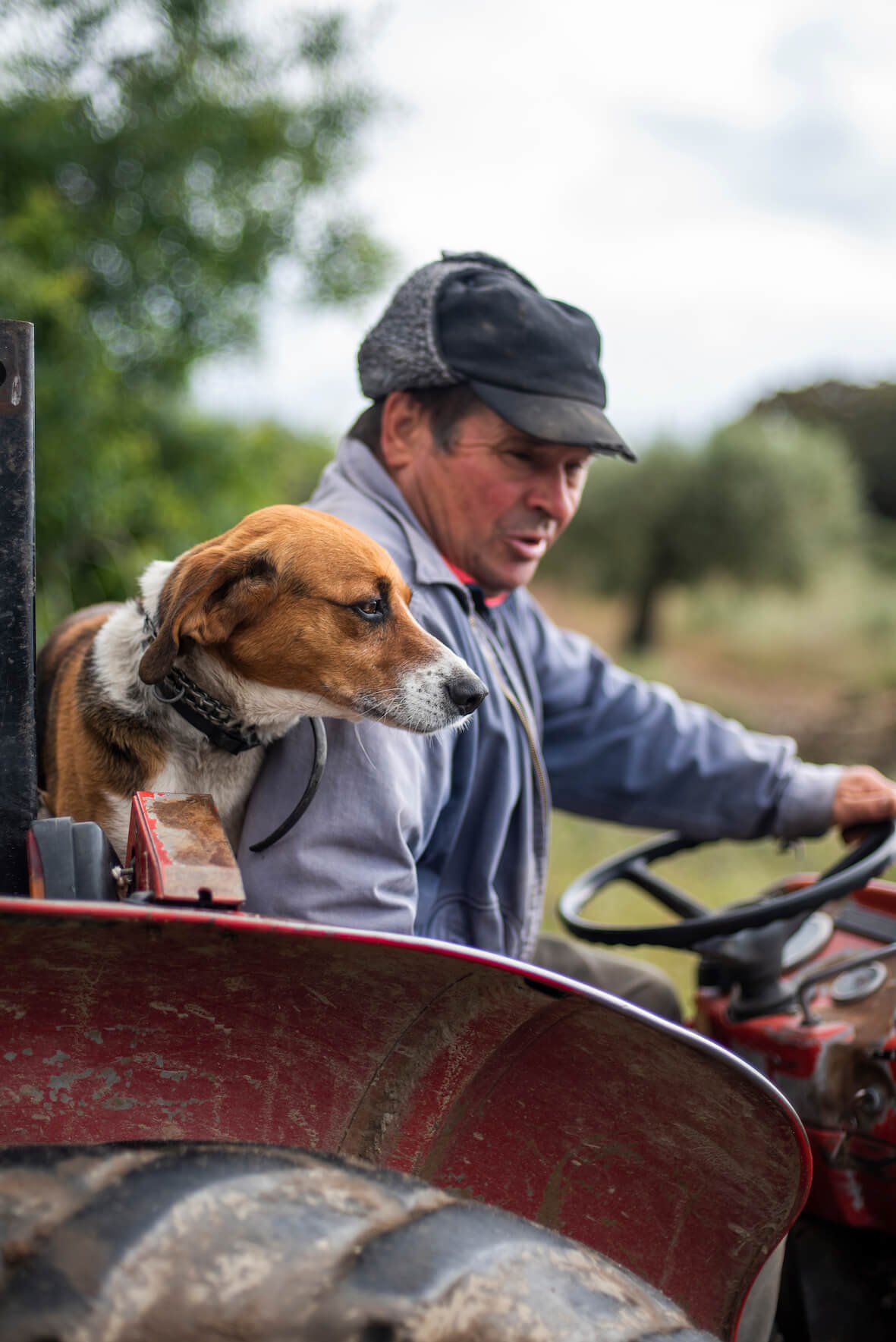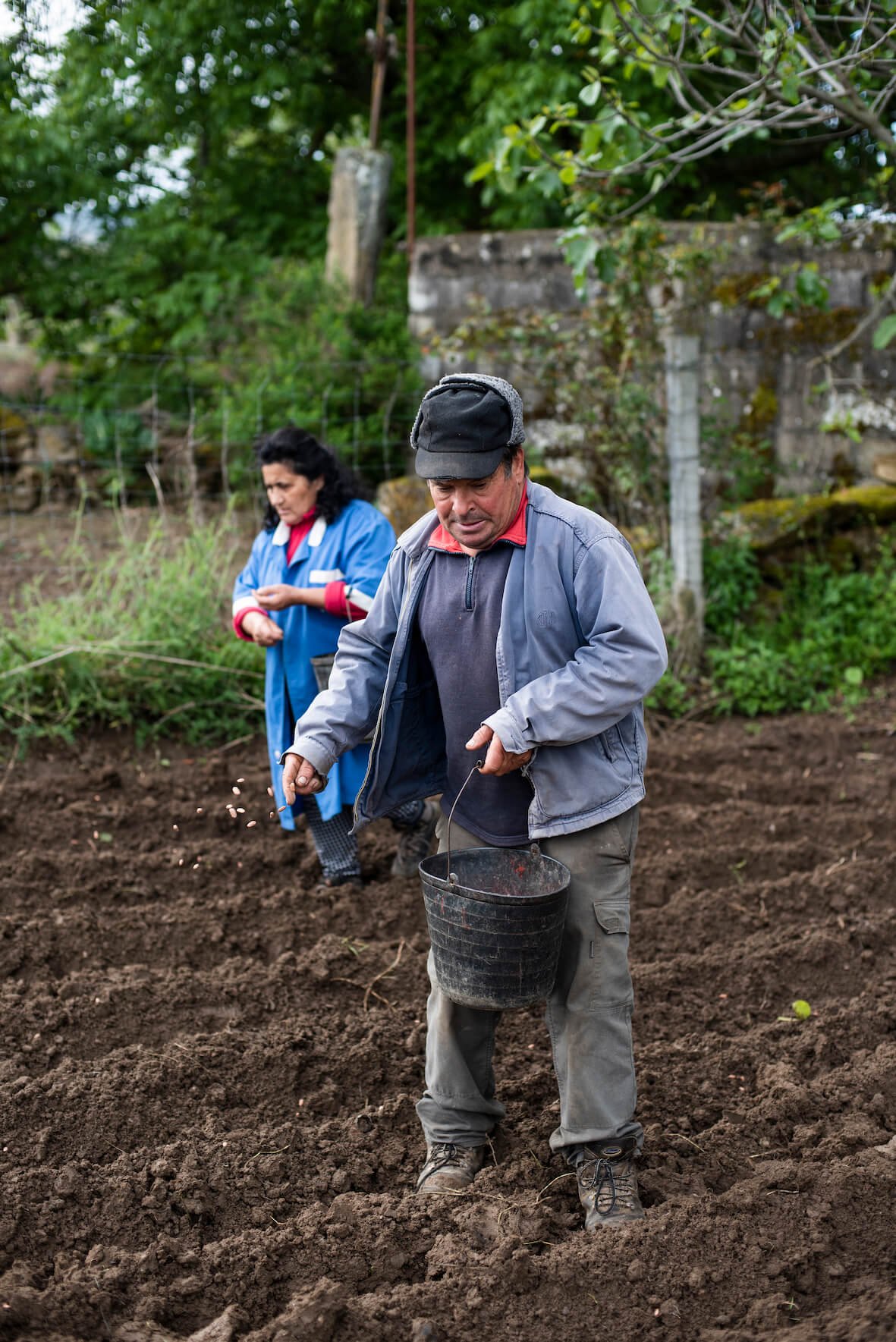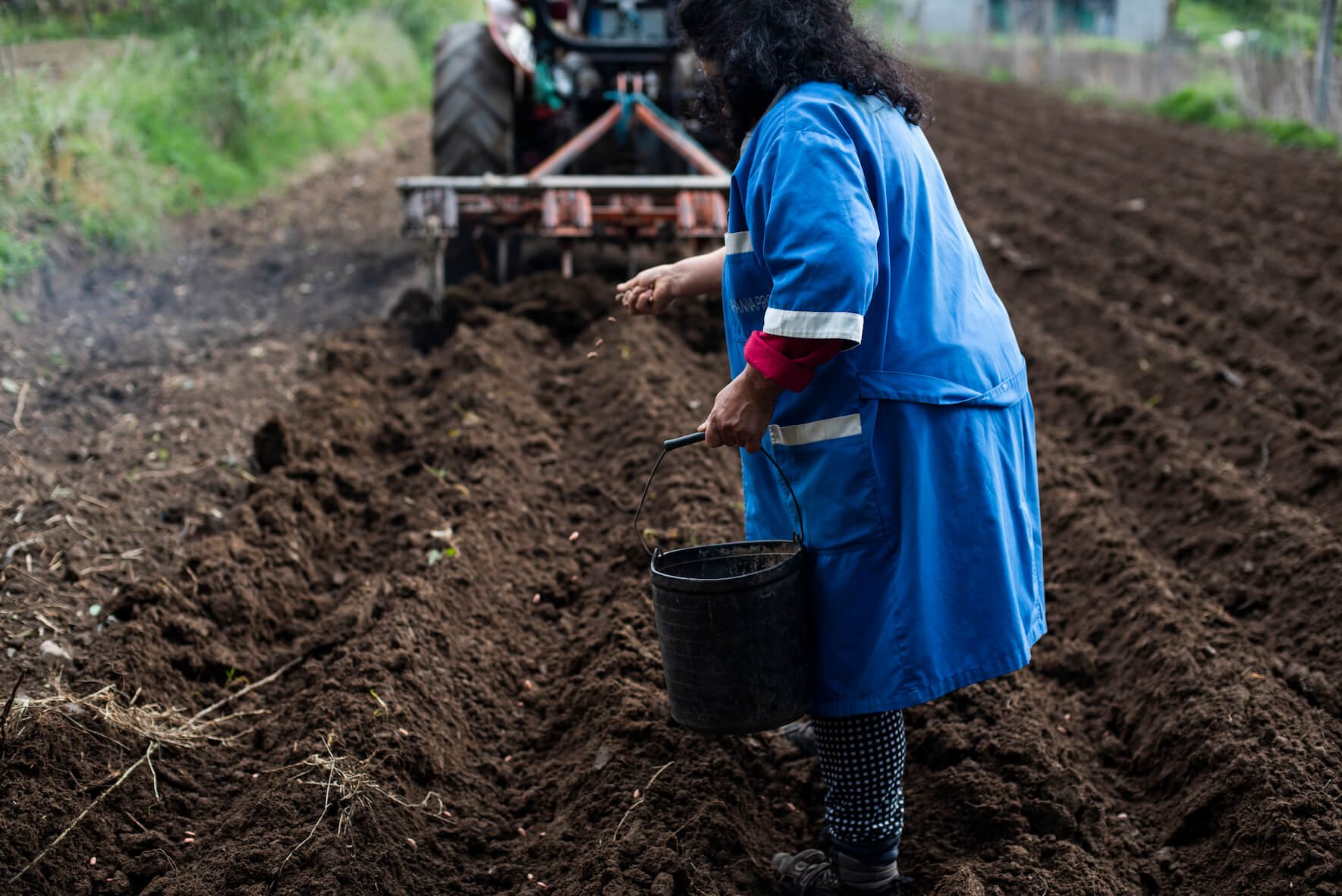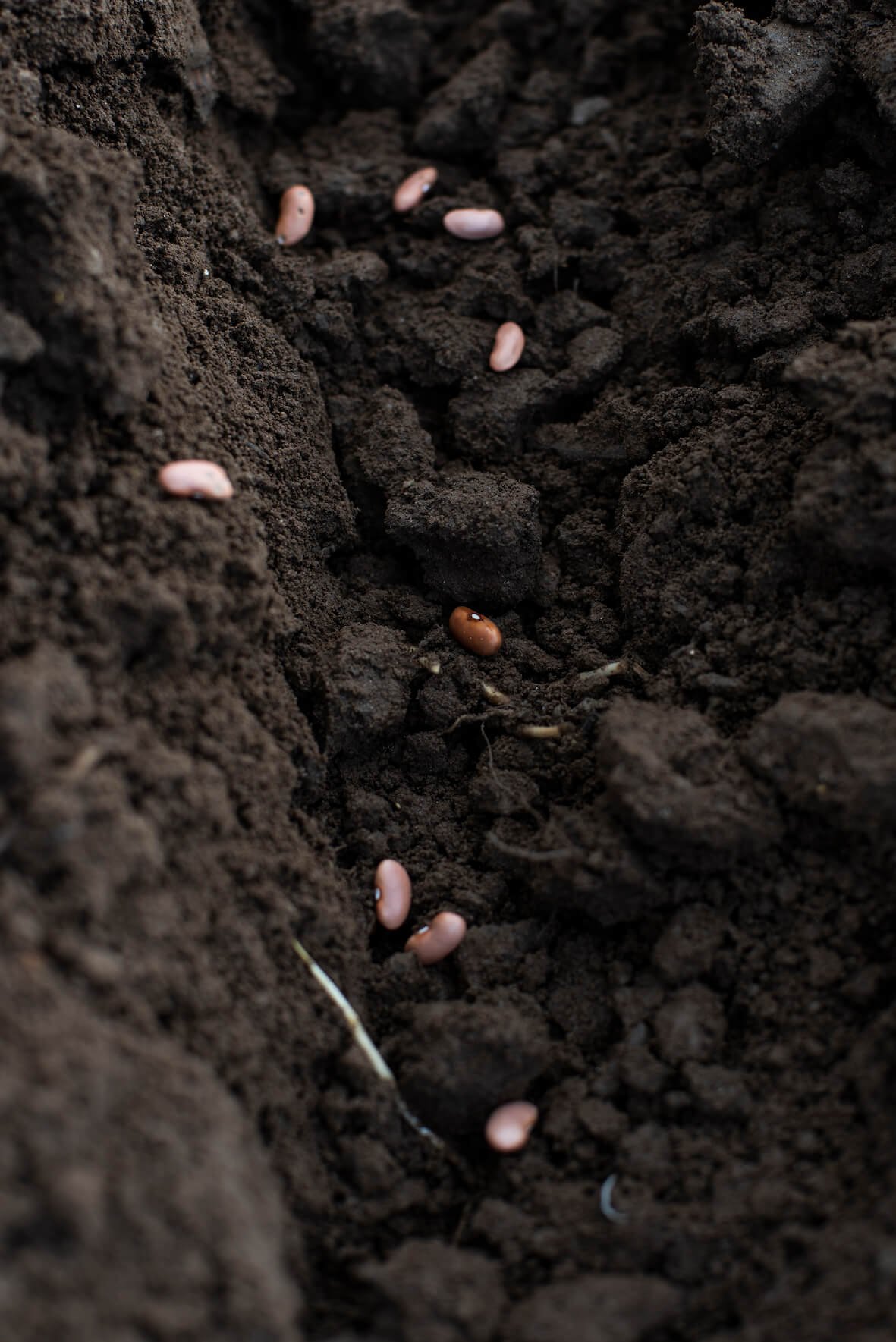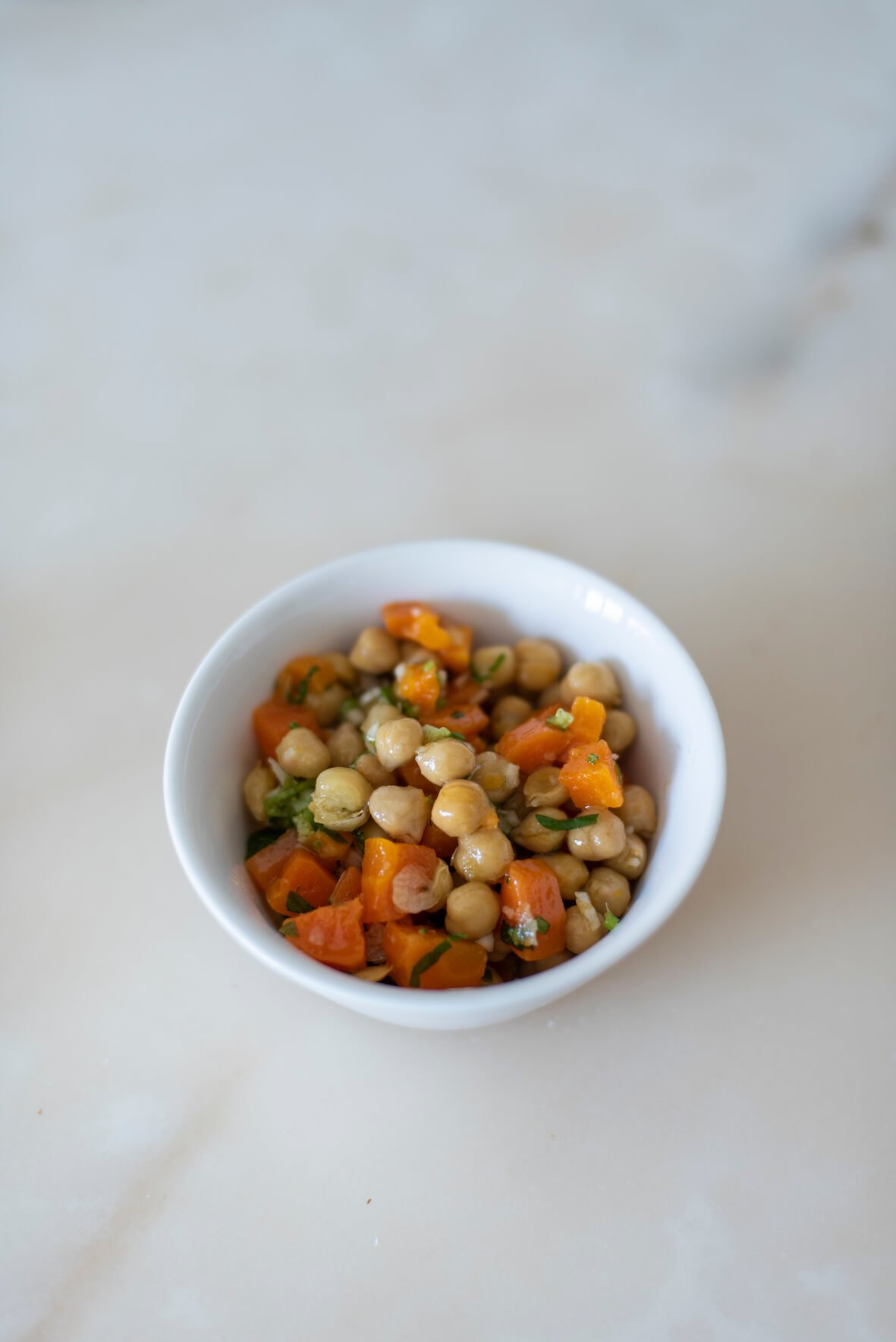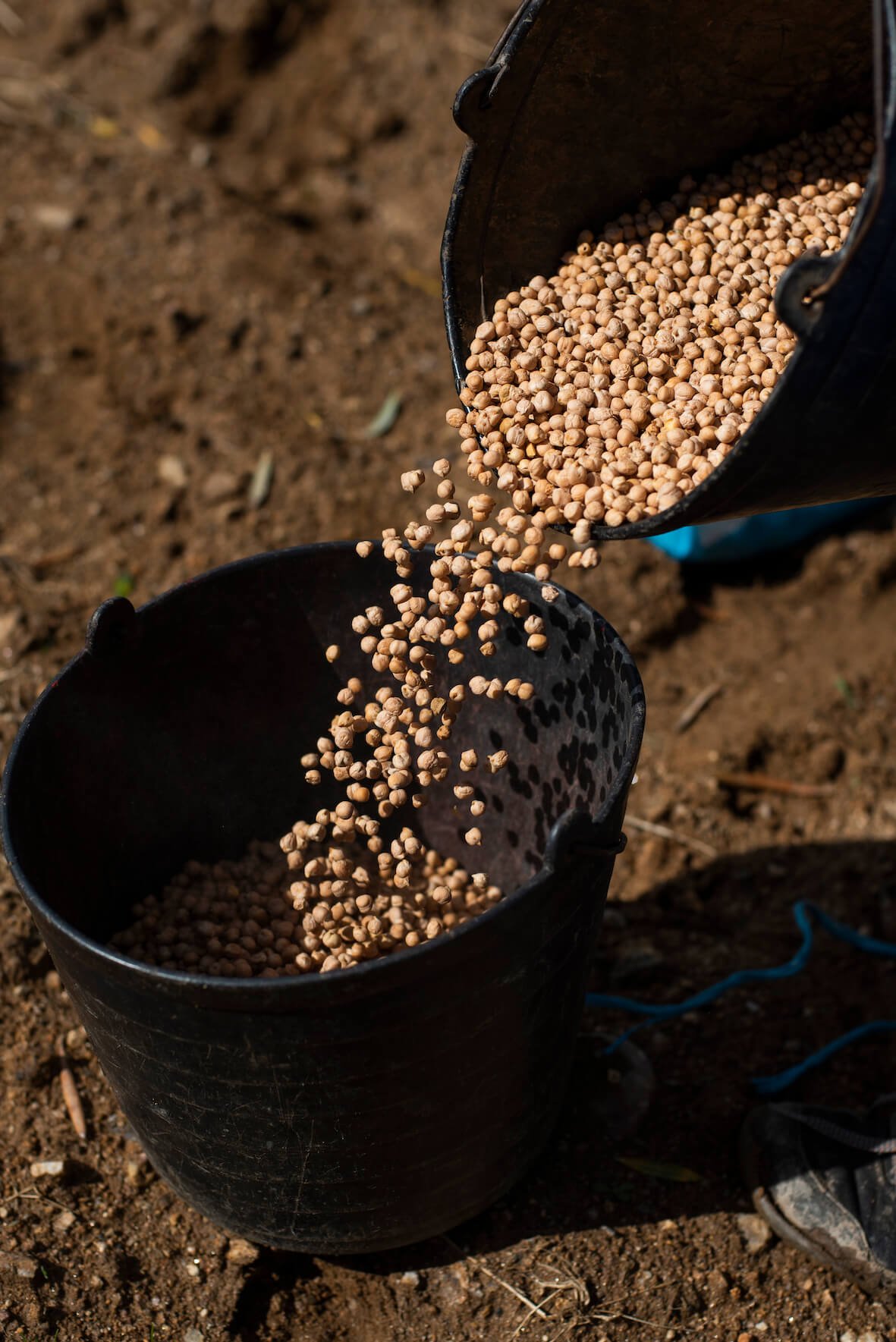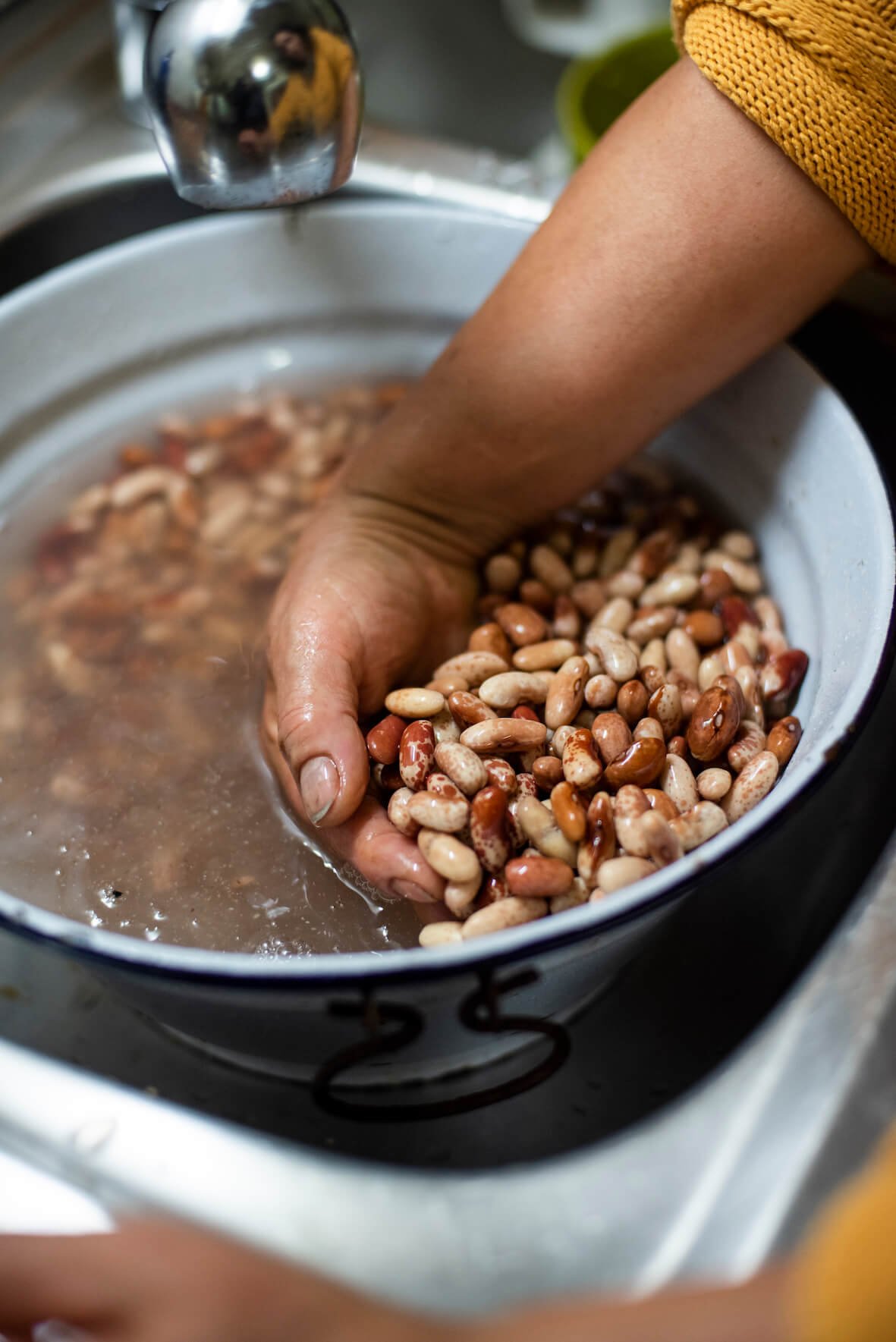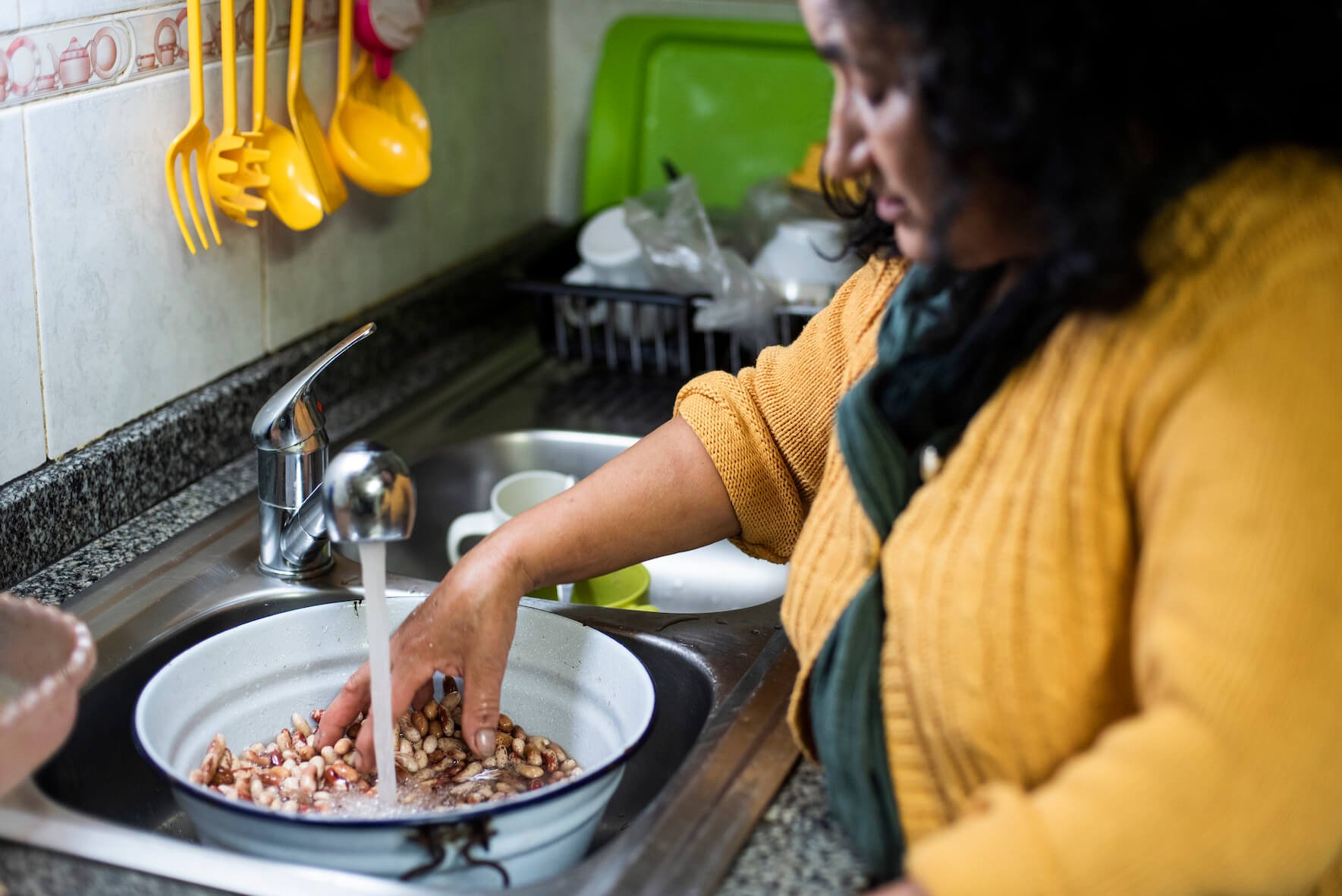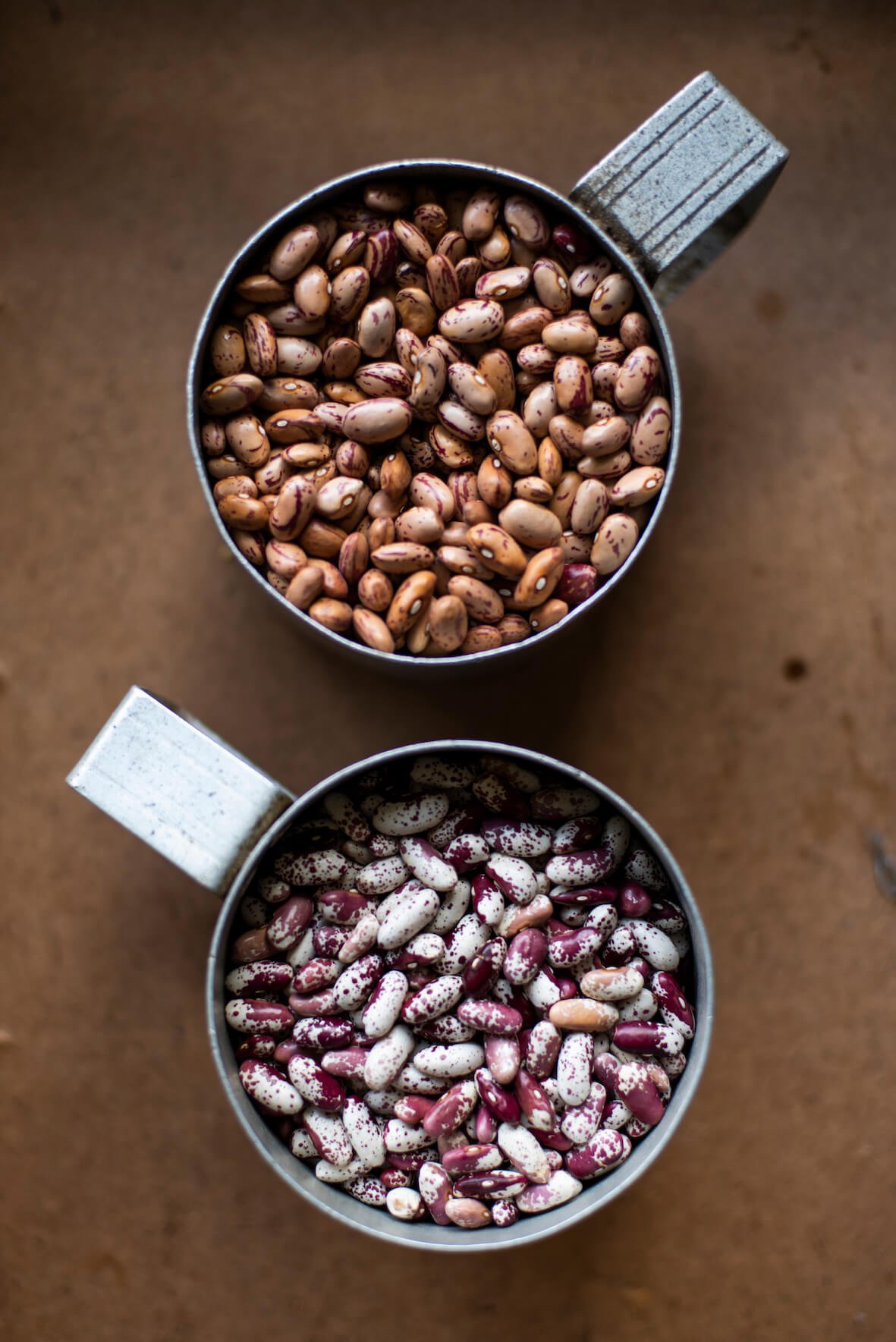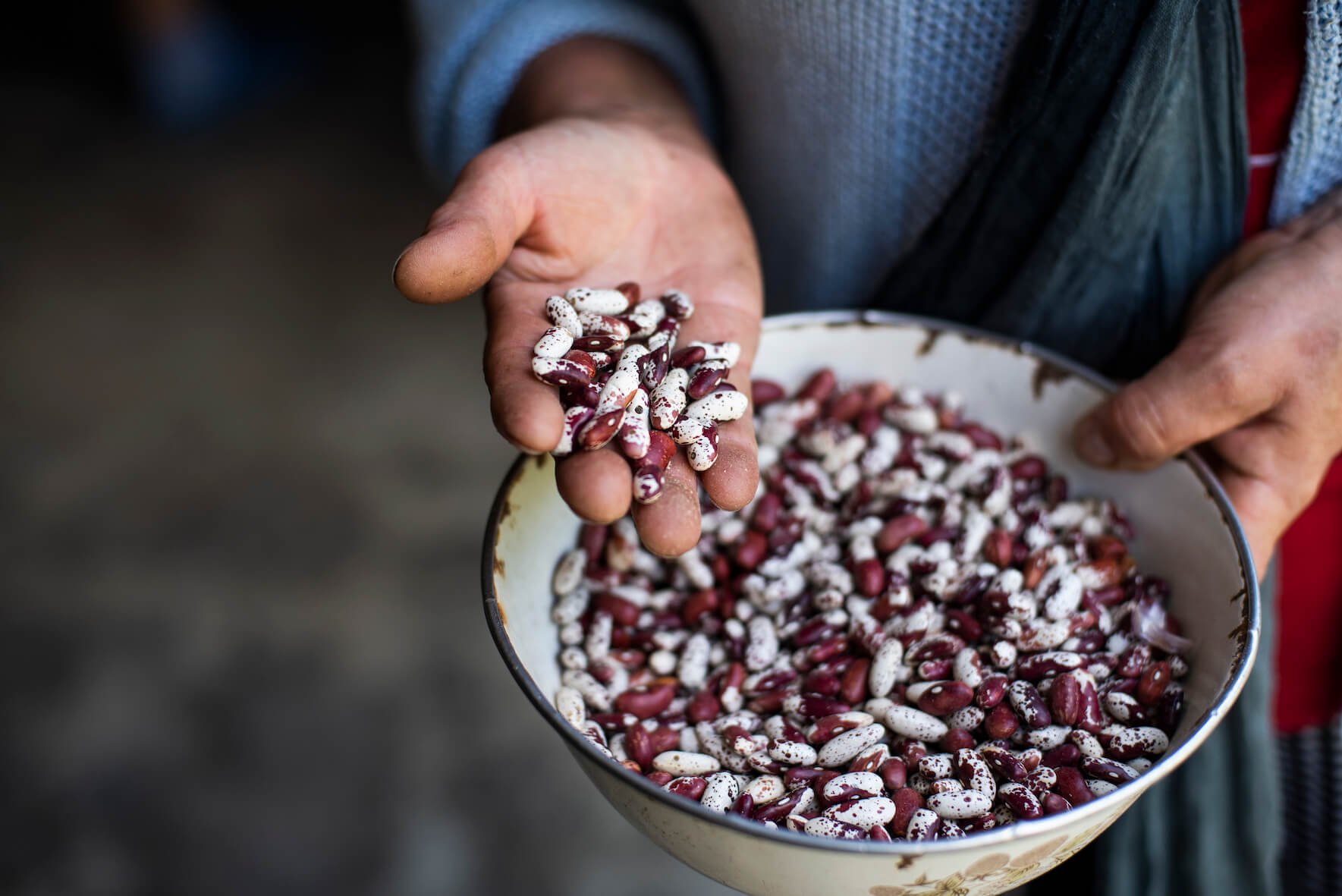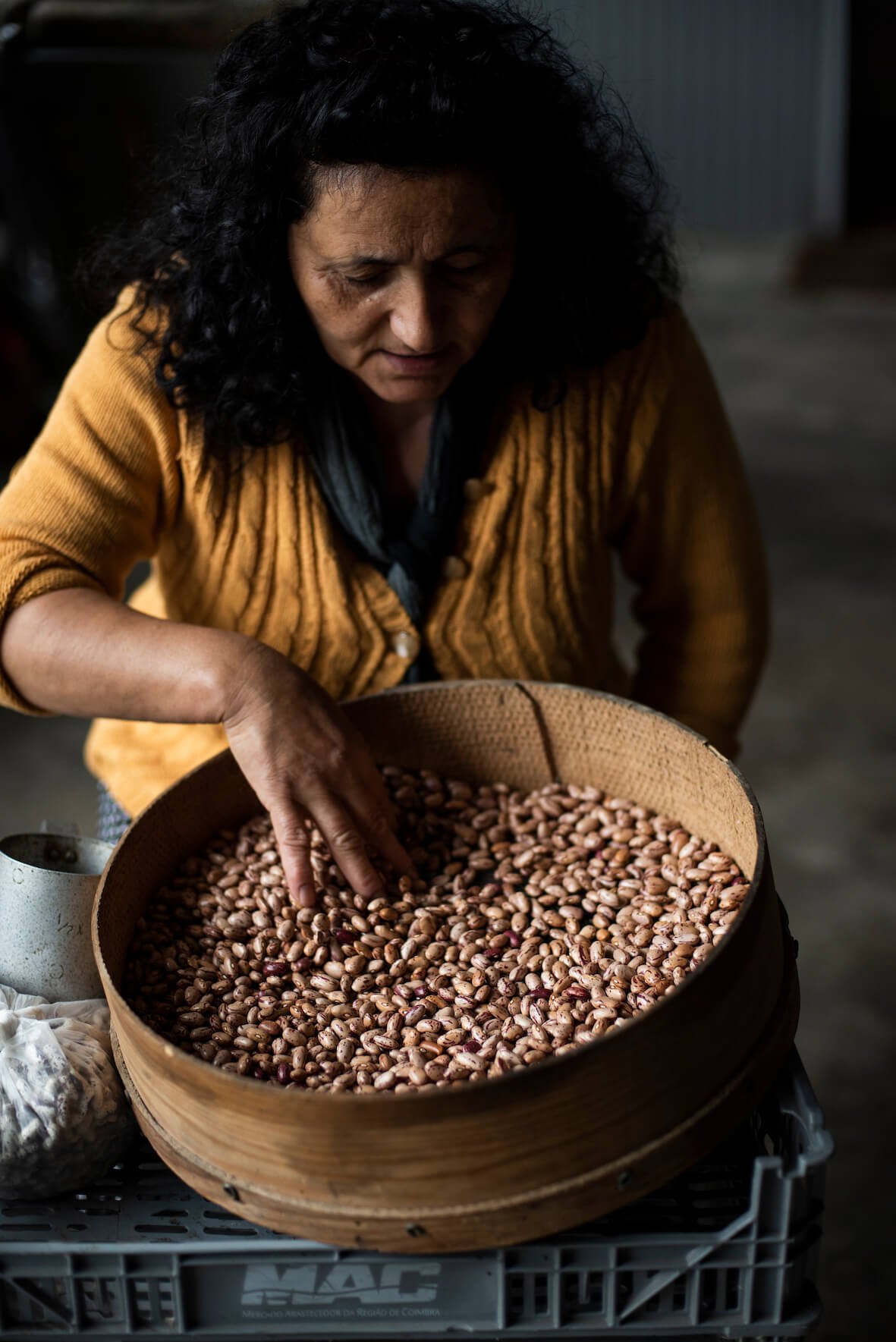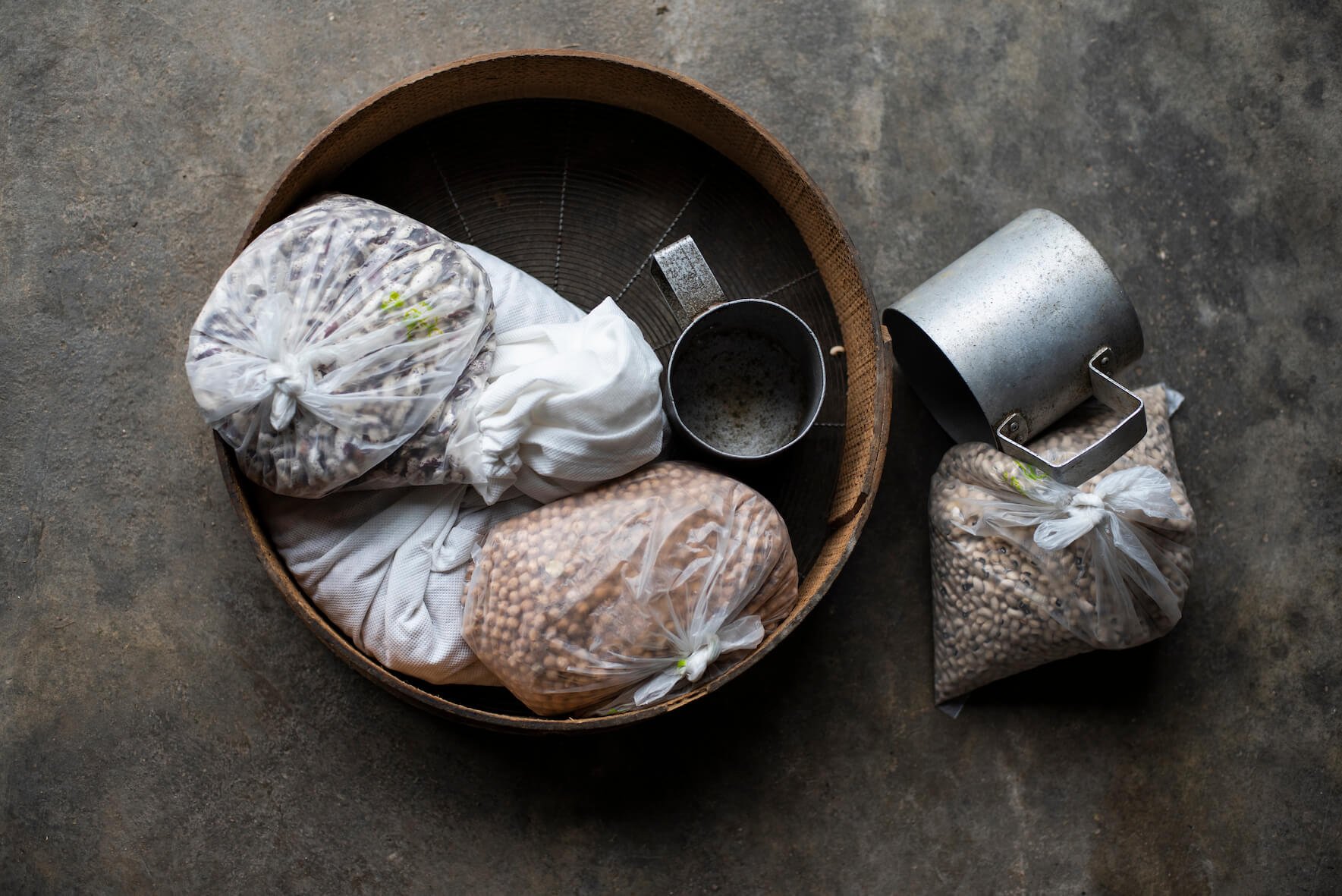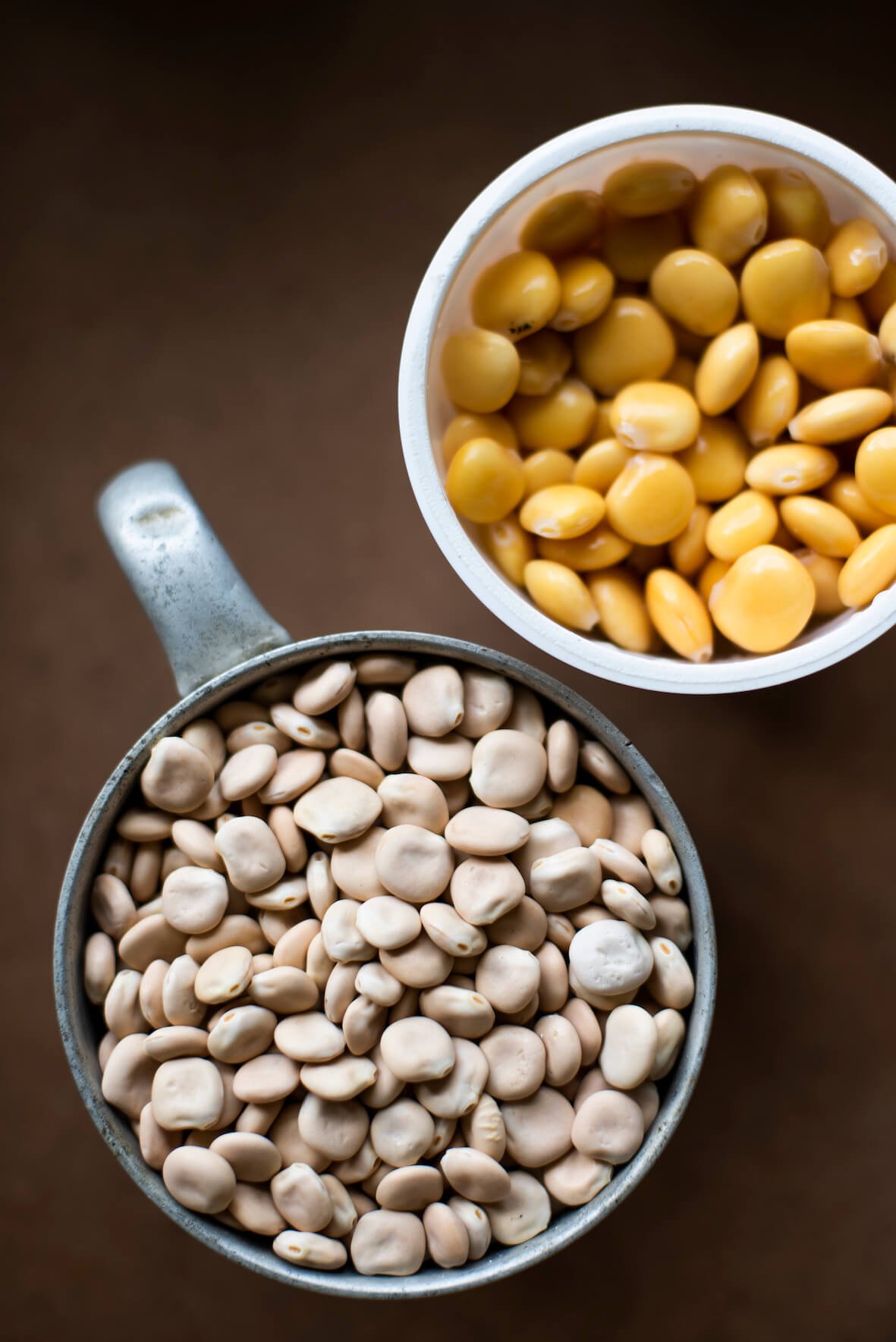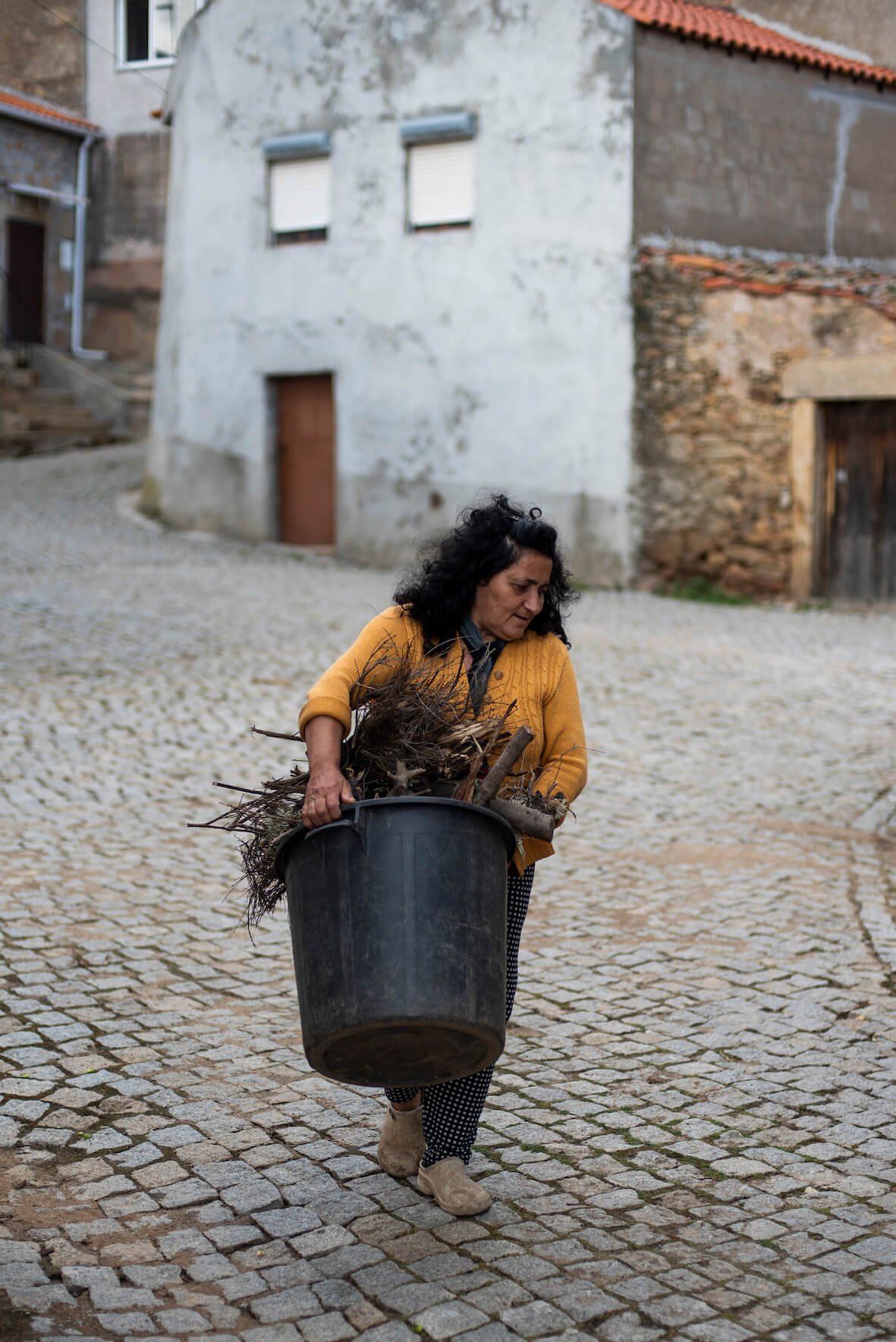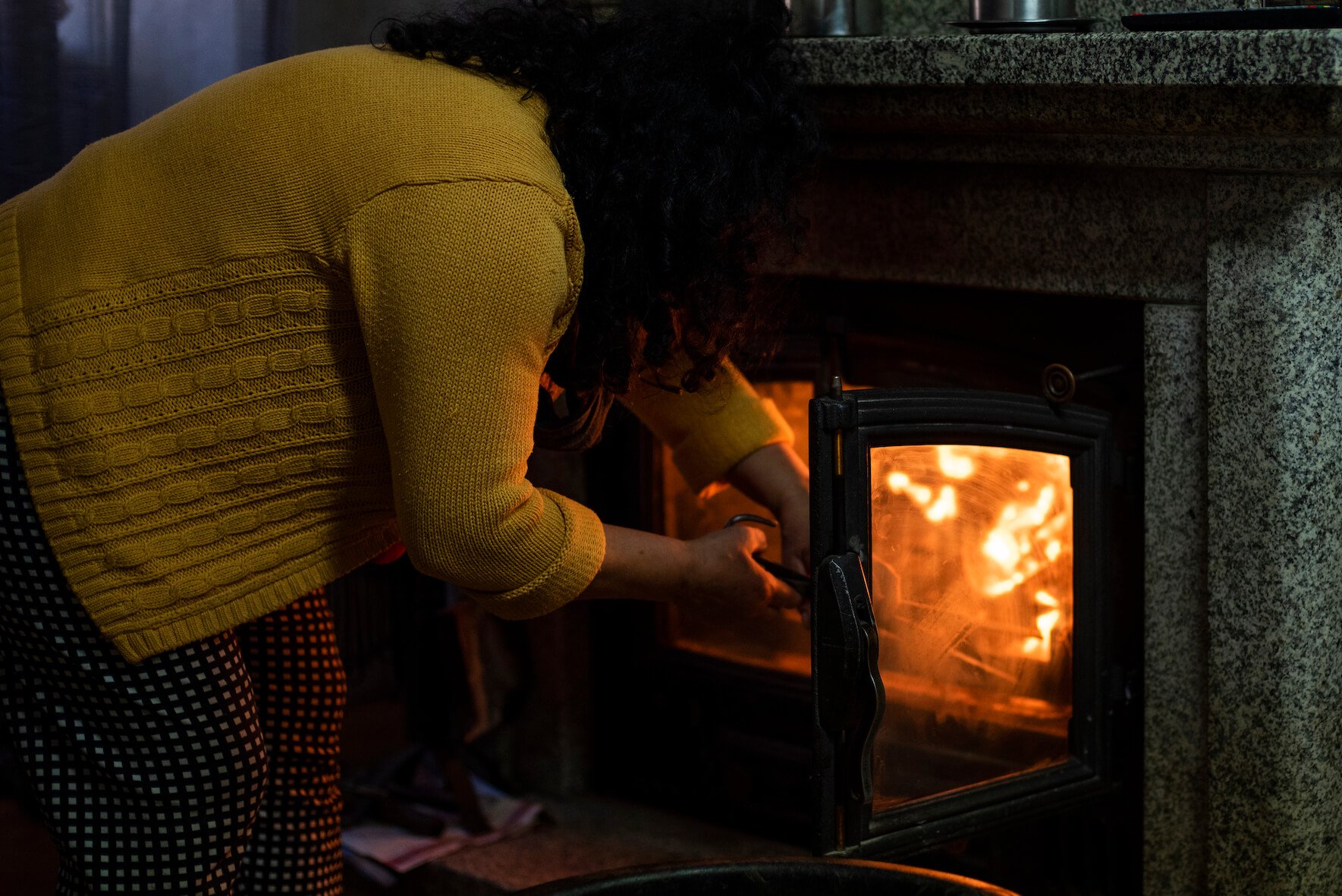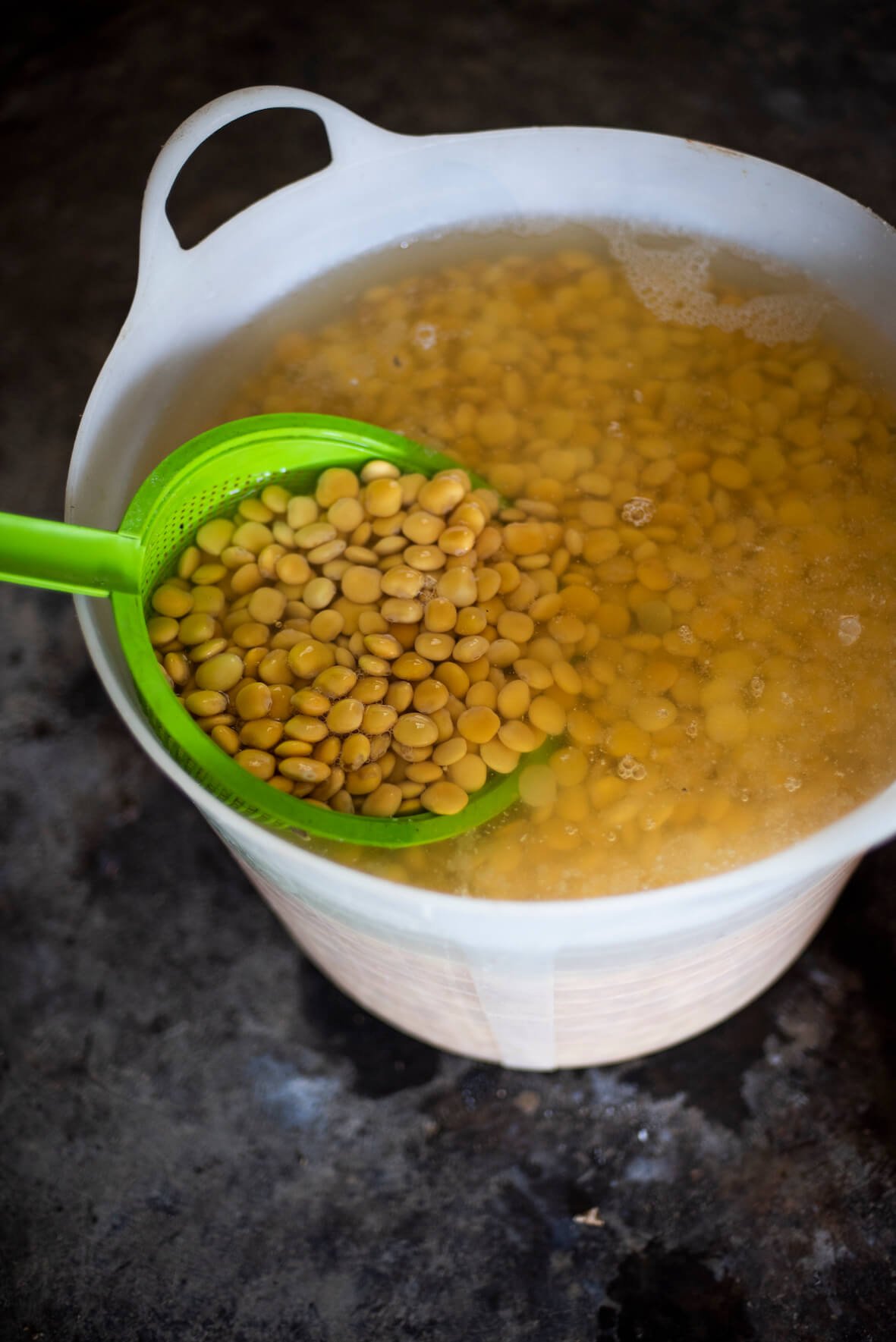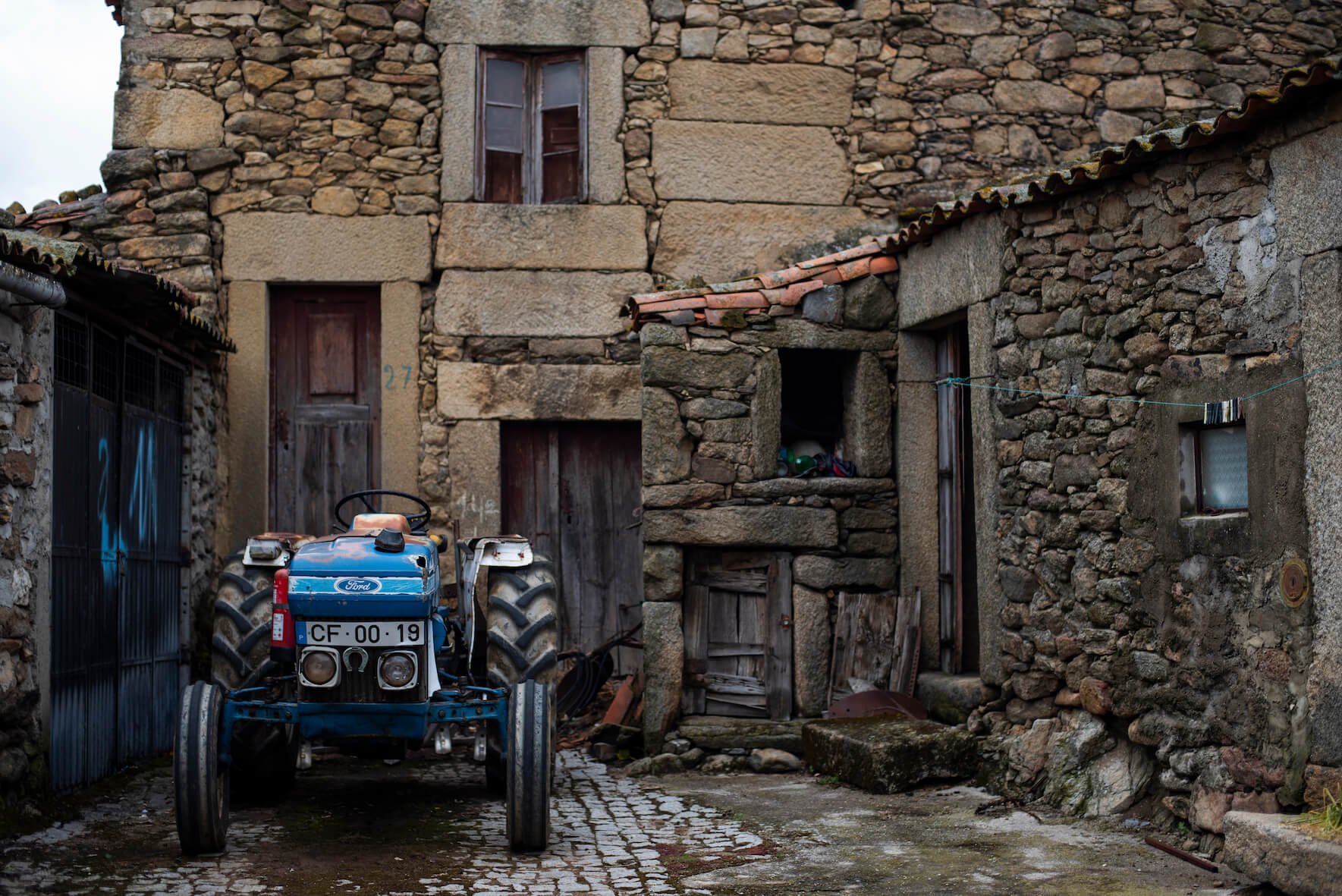spilling the beans with emilia reigado
It’s bean planting season in the Côa Valley, Portugal so we spoke with Emilia Reigado, the bean queen herself, to learn more about her tasty and versatile crop. We find out about the different varieties, preparation tips and how best to cook and eat them.
Dried beans may not be your go-to store cupboard favourite yet, but they should be. Here’s why…
KICKING THE CAN
Cooking & eating with bulk-dried beans
Although it may seem like a chore to invest time in soaking and boiling dried beans, and a can of beans is far more tempting, the trade-off for your time is a pot of deeply flavoured, complex nutrients that canned beans will never come close to.
Aside from being more cost-effective than canned, starting with dried beans may also be tastier and healthier. Canned beans often have a high sodium content and a subtle metallic taste. Meanwhile, dried beans better absorb the flavours you cook them in, whilst leaving you the freedom to choose the texture you want – from mushy to al dente, one could say. Once the cooking is over, you end up with a pot full of bean broth which is a great flavour base for soups and stews. Always worth making a bit extra as beans freeze down beautifully.
Beans in general are packed with fibre, potassium, magnesium and iron – all nutrients we don’t get enough of.
PREPARATION
Soaking your dried beans before eating, is a great evening habit to get into. Put your beans in a pot to soak overnight and work them into a meal over the next day. You don’t need a specific meal plan, just know that you will get to eat delicious beans in some way, be it a salad, chilli, burger or stew.
When it comes to preparation, Emilia Reigado recommends soaking beans overnight and boiling them for an hour before cooking the next day. We also recommend adding a bay leaf or two whilst boiling, and most importantly to let them fully cool in the cooking water before the next stage.
BLACK-EYED PEAS
The Quick Bean
“In comparison with the other beans, black-eyed peas or beans are smaller and lighter; they cook faster than the other beans and aren’t as dense. They are commonly used in salads or eaten cold with tuna, boiled egg, or with bacalhau (salted fish). They can also be used in soups.
Here in Portugal they are not traditionally used in stews with meat as we use the other beans for this but they need to be soaked in cold water before cooking just the same as the others.”
CHICKPEAS
The Versatile Bean
“These are the local chickpeas. We have another version that is bigger but these are locally grown and native to this region. It is an older heirloom variety. It also needs to be soaked overnight before cooking and is used in much the same way as the Black Eyed Peas for salads, or you can also use them in meat dishes or with pasta, or make soup and purees with it. It is very versatile and nutritionally very dense. Chickpeas are full of vitamins and very good for you.”
LINDINHO BEANS
The ‘Cute’ Bean
Lindinho translates as ‘cute’ or ‘pretty’ which seems obvious when you can see these beans’ gorgeous colouration. Emilia tells us Lindinho beans are the perfect ingredient for a thick, pasty stew.
PINTO BEANS
The Powerhouse Bean
Small and flavourful, the Pinto bean is a high-protein, high-fibre powerhouse. Earthy, nutty, rich, and creamy in taste, they are commonly used in chilli and are great re-fried. Pinto beans are also a delicious side dish or a main ingredient in soups, stews, dips and burritos.
LUPINI BEANS
The Delayed Gratification Bean
For the hard-core bean-lovers amongst you, who are not perturbed by a few days and repetitions of soaking, Lupini beans are your challenge and your reward! A common apéro in Portugal and Spain, Lupini beans are to be enjoyed on their own, sprinkled with some salt (Noirmoutier Fleur de Sel anyone?) and accompanied by a cold beer. Simply soak, cook, soften and cool.
Lupini Preparation:
“Soak in cold water overnight.
Drain them the next day and rinse them with clean water.
Put them in a pan with unsalted water and boil for 5-7 minutes.
You know they are ready when they separate easily from the peel, check with your nails or teeth.
Be careful not to overcook them, as they will become too soft.
Remove them from the heat, drain and cool them in cold water.
The next day remove the water and add fresh.
Repeat this draining and soaking process for 2-3 days until they lose their bitterness.
Lupini beans keep for several weeks in a Tupperware in the fridge with water and a thin layer of salt.”
LEARN MORE…
The Food Programme - Beans
Photography: Kerry Murray
Words: Georgie Holman
